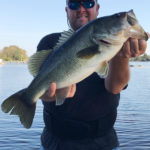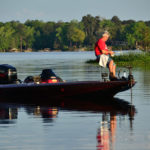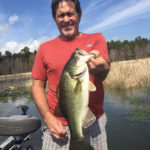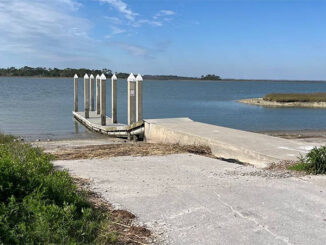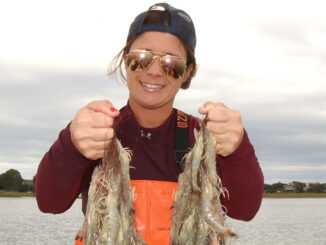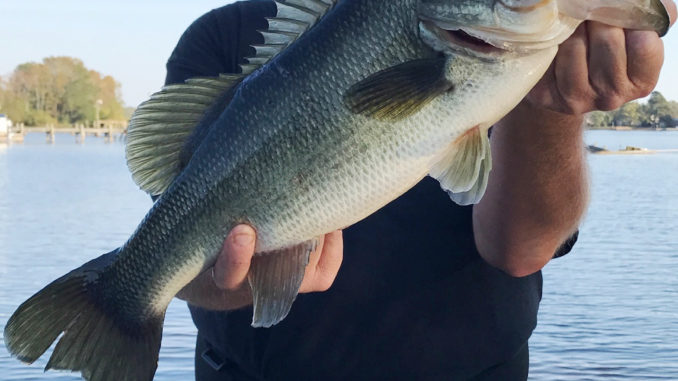
South Carolina’s Cooper River is a coastal largemouth factory during the spring
South Carolina is known for its fantastic fishing, from 40-pound bull reds and gator speckled trout along its salty shores to world-record catfish and slab crappie from its notable reservoirs, Anglers don’t have to trailer far to locate a super-productive fishery.
Largemouth bass are also one of the state’s coveted fisheries, with ample opportunities for great fishing. to pick up fast and furious action for big bucket mouths, whether in reservoirs or rivers.
When bass pro Britt Meyers of Lake Wylie, S.C., heard that the BASS Elite Series was bringing a tournament to South Carolina two years ago, specifically to Georgetown, S.C., he knew that some of the state’s best — and maybe overlooked — bass waters were within reach.
Meyers’ home is only three hours from the Cooper River, and he knew that stretch of water was capable of producing big bass, and lots of them. And he was correct.
“I traveled two hours and 110 miles each way to fish the Cooper River, because it was the best shot at a 20-pound bag,” Meyers said. “On my morning of practice, I ran into them, quickly catching over 20 pounds of fish from a small area. In four days, I put over 880 miles on my Mercury engine, but it paid off with a win.
Myers selected the region upstream of Cypress Gardens and the railroad trestle where complexes of reclaimed rice fields are found, right in the middle of one of the best sections in the entire river for largemouth bass.
The Cooper is a unique system capable of producing large bass due to the fertile waters coming out of Lake Moultrie and from the varied forage base contained in the upper section of the Cooper. But the entire river doesn’t offer ideal bass habitat because of the saltwater intrusion downstream and the narrow and deep-banked character of the river upstream near the Jefferies Generating Station at the Lake Moultrie dam.
Closer to the reclaimed rice fields, the river widens and provides ideal all-season habitat for bass. The old rice dikes, depressions and grass beds were the perfect combination for Meyers to pluck his winning bags during the spring of 2016.
“Instead of having a 50-mile area with bass all over, they are concentrated in the rice-field area. Everything these fish need was in these old rice fields, (including) flats with depressions, deep water, shallow water, current and submerged grass. Fish live in this area, and it is where I will fish every time I fish a tournament in this area.”
Not only does this area provide a wide range of depths and underwater structure, it is covered in submerged aquatic vegetation that holds fish. Meyers recommends using three basic lures around the grass, close to current in the spring.
“Topwater lures, shallow-running crank bait, and a heavy jig you can flip into the grass is what will produce the best bites during the spring,” he said.
Topwater lures and shallow-running crank baits are perfect for imitating the Cooper River forage base. Bass are readily feeding on a wide variety of larger forage fish, including shad, herring, sunfish and mullet. Any lure resembling these types of forage fish fleeing in the current is a perfect way to dupe a Cooper River largemouth.
Meyers’ favorits are a Rapala DT-6 crankbait or a Green Fish Tackle TAT, (Totally Awesome Topwater).
“The hard baits will move a lot of water and make plenty of noise,” he said. “But many bass will be buried in the vegetation where I like to have something to flip into the grass. I like to pitch a heavy Green Fish Tackle swim jig or shakey head jig into the grass.”
DESTINATION INFORMATION
HOW TO GET THERE — The upper section of the Cooper River is best accessed from the Dunham Creek landing off Cypress Gardens Road in Moncks Corner or from the US 52 crossing just below the Jefferies Generating Station in Moncks Corner.
WHERE TO GO — The best section of the Cooper River is the section just upstream of the Cypress Gardens region where the relic rice fields are located. The historic dikes have deteriorated and the fields are nearly completely flooded, provided excellent habitat for largemouth bass. The target area begins just upstream of the railroad trestle where the river appears to widen considerably, and it continues upstream for several miles. This area can be covered with vegetation and moving water.
WHEN TO GO — Fishing for largemouth bass in the upper section of the Cooper River can be good year-round. The best spring begins in March and will continue into May and early June.
TACKLE/TECHNIQUES — Heavy action baitcasting tackle spooled with braid is the norm. Fish around submerged vegetation with soft plastics and fish topwater plugs, spinnerbaits and crankbaits in the right situations.
FISHING INFO/GUIDES — Marc Deschenes, 843-708-5473, www.vipadventures.net; 843-708-5473; Brett Mitchell, 803-379-7039, www.fishingwithbrett.com. See also Guides and Charters in Classifieds.
ACCOMMODATIONS — Charleston Convention & Visitors Bureau, 304-344-5075 www.charlestoncvb.com.
MAPS — DeLorme’s South Carolina Atlas & Gazetteer, 207-846-7000, www.delorme.com.

